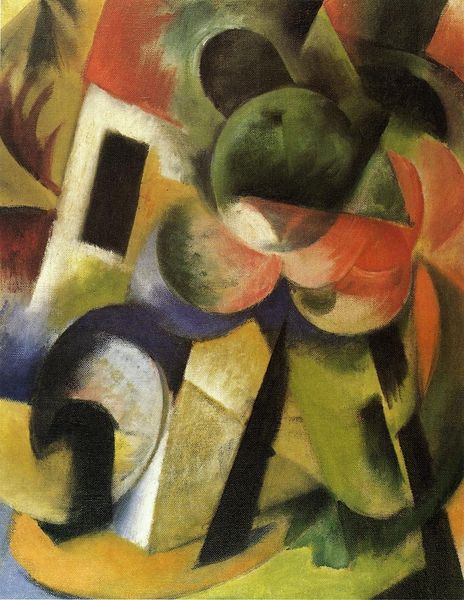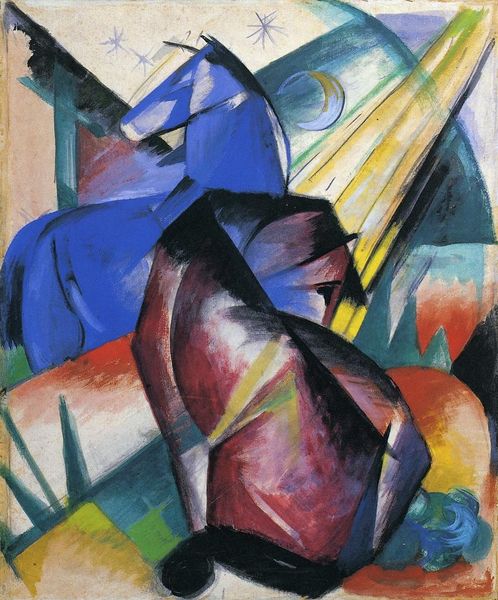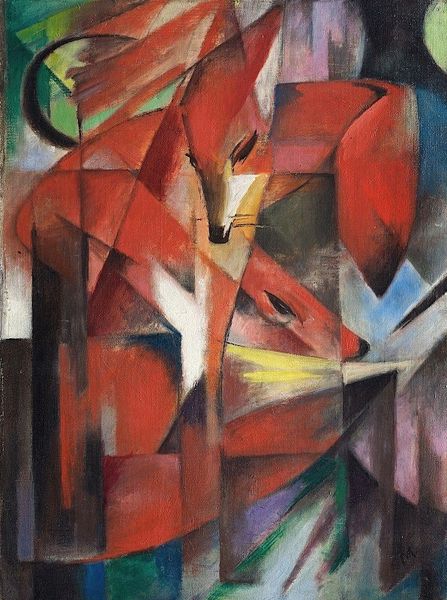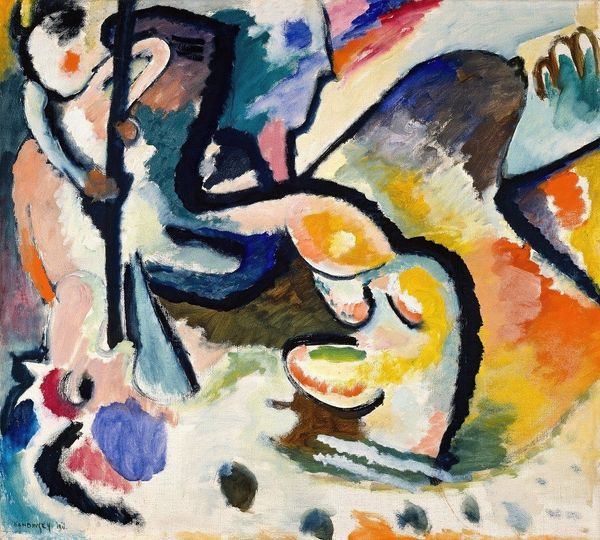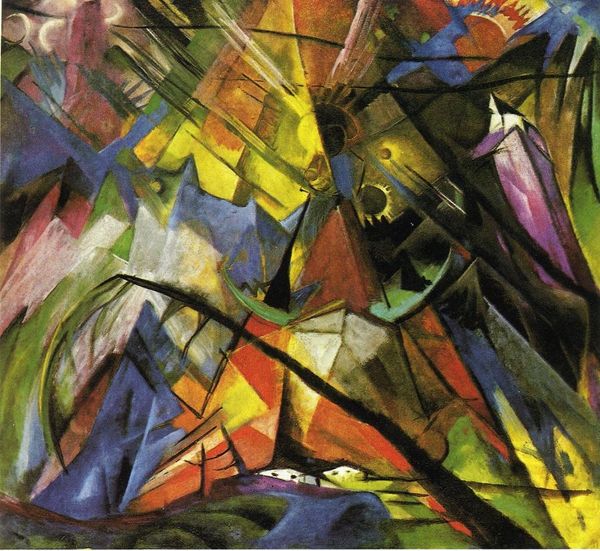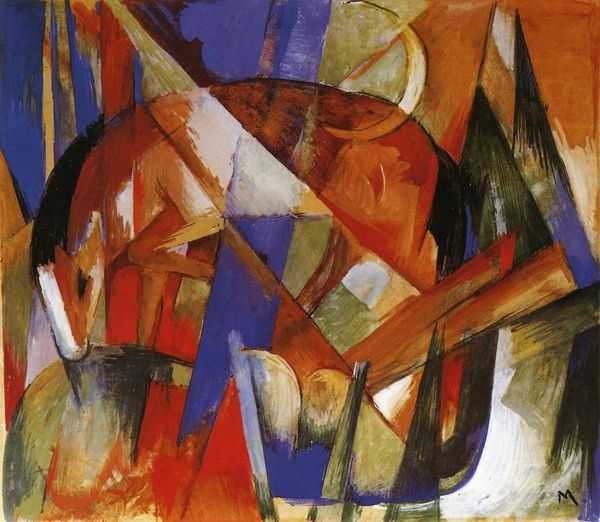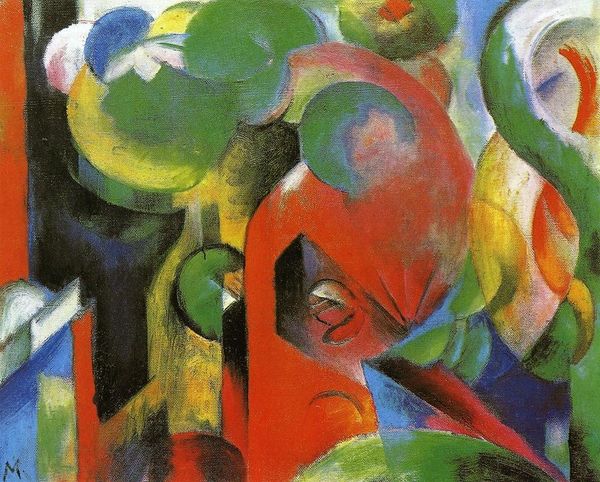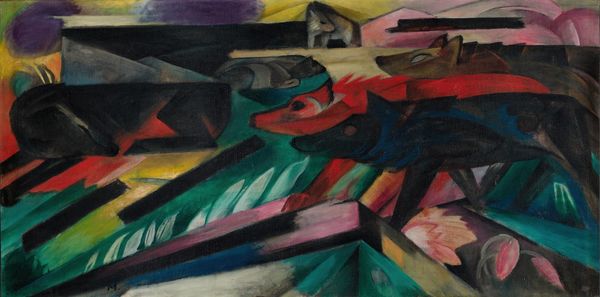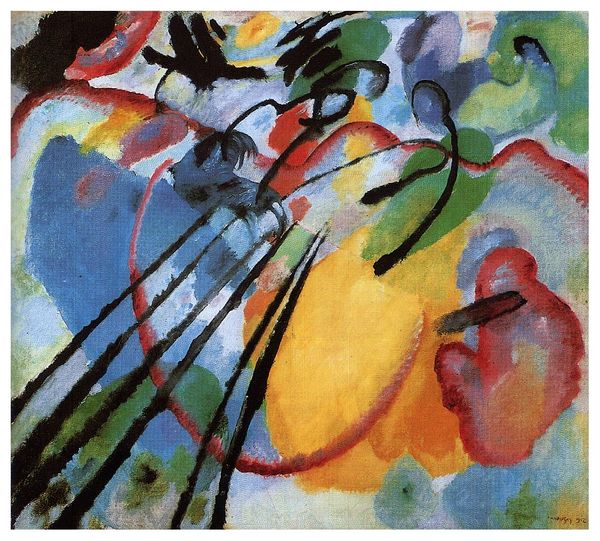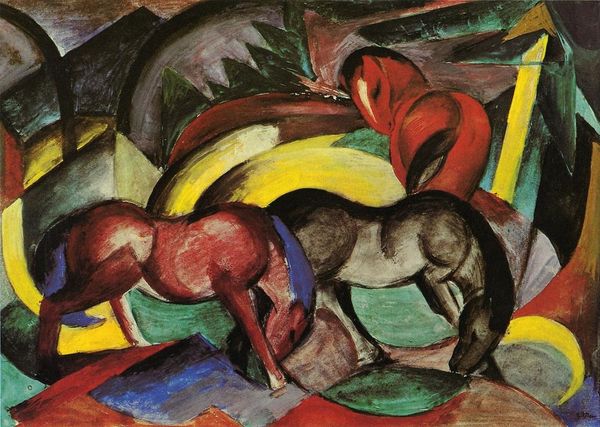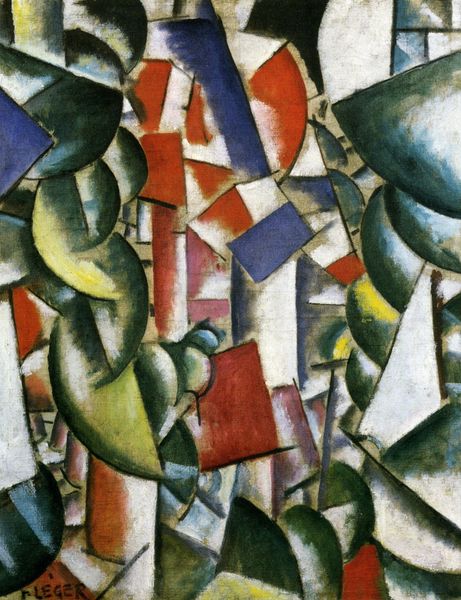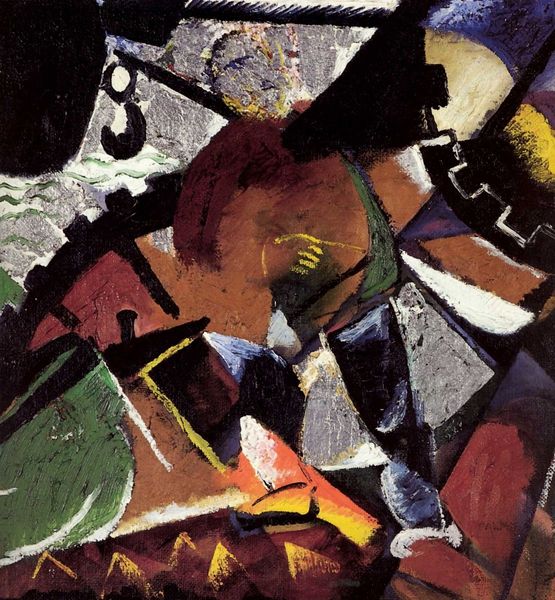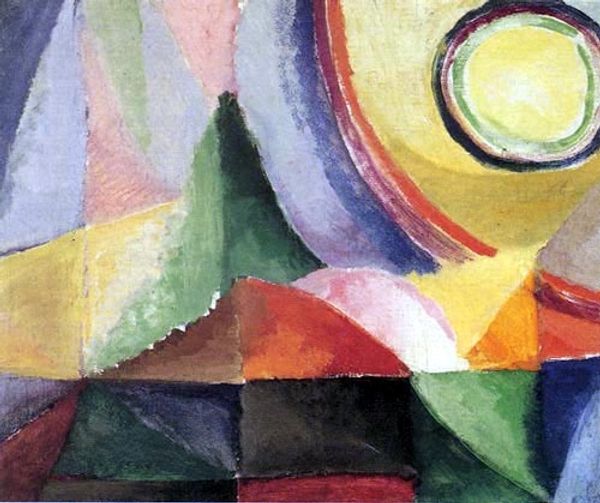
oil-paint
#
abstract expressionism
#
animal
#
oil-paint
#
german-expressionism
#
oil painting
#
geometric
#
expressionism
#
animal portrait
#
abstraction
#
expressionist
Dimensions: 40 x 27.7 cm
Copyright: Public domain
Editor: This is Franz Marc’s "Mandrill," painted in 1913. It's an oil painting and…wow, the shapes are so intense! I find myself focusing on the swirling forms and colors more than the animal itself. What do you see in this piece? Curator: Considering Marc's context within German Expressionism and his fascination with animals, let's think about the material conditions of producing an "animal portrait" in 1913. The oil paints themselves – how were they manufactured? What pigments were available and where did they come from? The canvas too. Were these materials easily accessible or part of a developing industrialized system changing artistic creation? Editor: That’s an interesting point. I usually just think about the artist's intentions, but not the literal stuff of the painting. Curator: And how does that materiality shape the meaning? Marc wasn't simply depicting a mandrill. He was using materials within a system that was being radically reshaped. These bright colors and fracturing shapes – do they reflect a changing social landscape as much as they reflect something about the animal’s spirit? Was he critiquing or embracing it? Editor: So you're suggesting the materials themselves, and how they were made accessible, contribute to the message beyond just representing an animal? Maybe the intensity of the colours, made possible through specific industrial processes, speaks to something beyond just the animal kingdom… a certain…intensity of modern life itself? Curator: Exactly. The availability and qualities of materials were not neutral factors. They informed Marc’s vision, impacting his depiction and influencing the observer. Considering material reality pushes our analysis past the biographical toward wider social and economic concerns. Editor: I never thought about art in terms of industrial supply chains before. Curator: Considering these material origins adds another dimension to how we understand this vibrant Mandrill, don’t you think? Editor: Definitely. I will look at paintings differently now! Thanks!
Comments
No comments
Be the first to comment and join the conversation on the ultimate creative platform.
